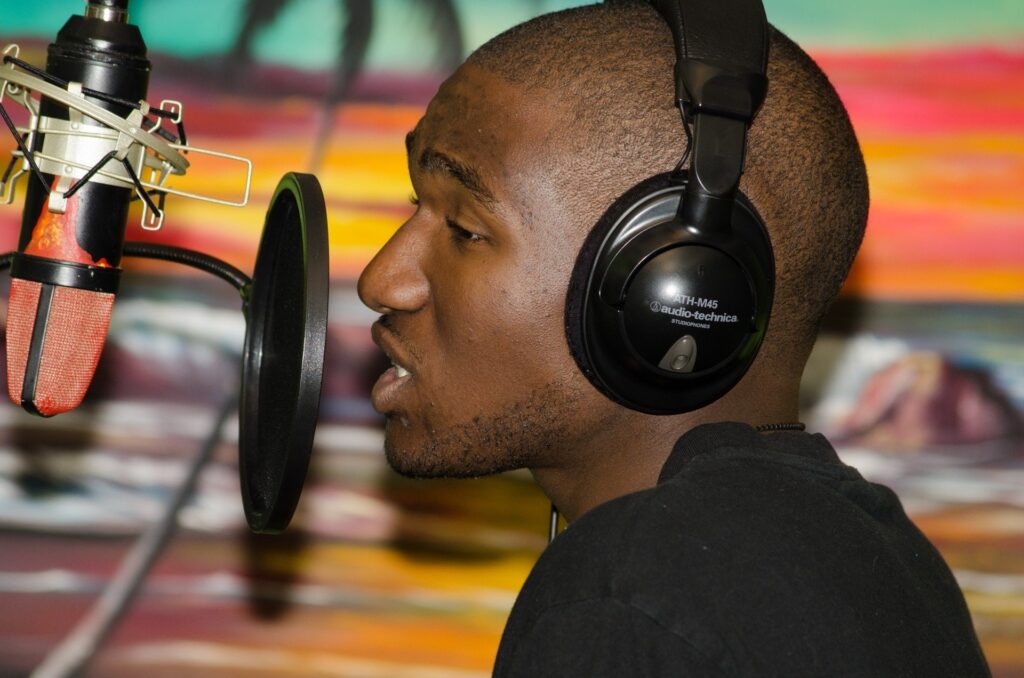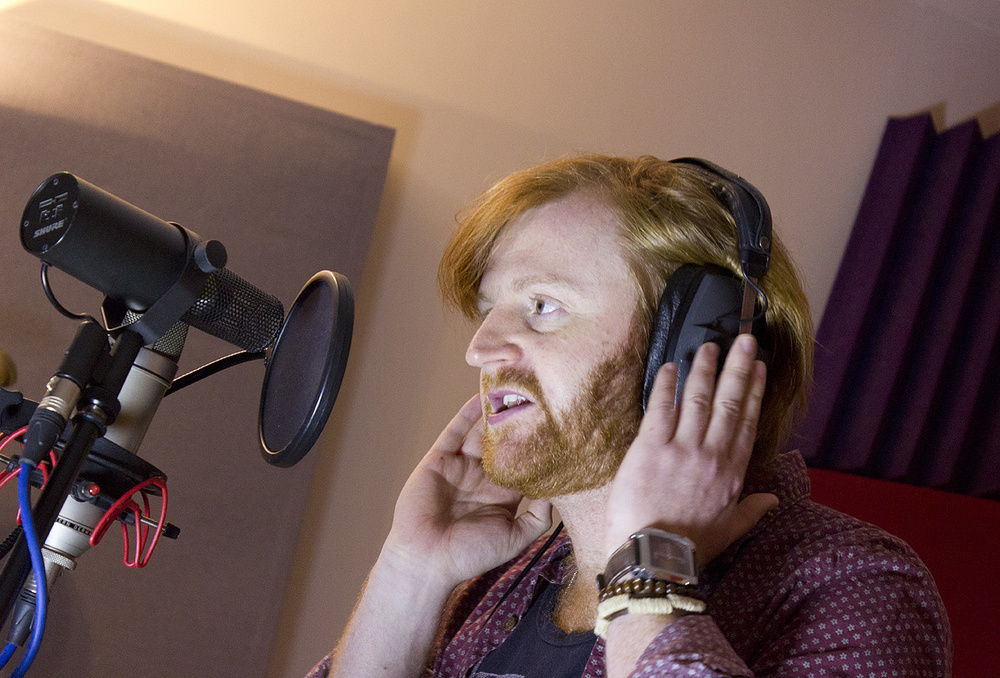You must have been in the studio one time or the other, and you see a singer wearing headphones while making a recording.
What comes to your mind will be what purpose does the headphone serve? Is it because it looks cool? Why do musicians wear headphones is one question that so many people, especially newbies, ask themselves all the time.
Anyone who just joined the music industry or who isn’t a part of the music industry must have wondered at some point why you find musicians wearing headphones while making a recording.
The truth is it is not done for a stylish purpose, but people who think this way are not to be blamed as headphones are considered as some form of a luxury nowadays. However, it doesn’t mean you should not consider investing in a decent and high-quality pair.
It looks very stylish since you find singers holding them with their hands when making a recording, but wearing headphones during a recording has so much to offer than you can ever imagine. Here are why so many musicians wear headphones when recording music in the studio.
You may also like this post – How To Fix A Blown Speaker
Content Navigation
Why Do Musicians Wear Headphones

Sound Isolation
One of the reasons why musicians always have their headphones on when making music is for sound isolation purposes.
A singer or musician must record songs in a noise-free and very quiet environment, and the reason for this is because they want to make sure they hear their sound instead of how they sound while singing inside the bathroom.
Singing without a headphone for a musician will hinder them from creating a better track as they would, and every audience will not be thrilled if the sound quality they are getting from a musician is very poor and low.
Every musician needs to get comfortable in their space for them to make better tracks, but using a headphone that slips off and stays uncomfortable will disrupt a musician when making a recording.
Canceling out external sounds and noise is what headphones do for every musician out there when recording music, and this helps them concentrate more on the music they are making.
Easy Transition
When a musician wears headphones when recording music, they can identify if there is a slight disturbance.
It makes it easy and possible for them to hear if there is a slight change to the amplifier, and it takes away the need for the musician to keep going back and forth to the control room to check the problem with her recording.
So many people think that DJ headphones are not ideal for Djing, but this isn’t true.
One good use of DJ headphones is that they make sure you hear what you are mixing, making it easy to transition between tracks.
It also makes it possible for DJs to make the perfect mix and identify the right time to make a switch, and DJs can make a switch or transition from one song to another without anybody in the crowd noticing. This is what a DJ headphone does.
Transitioning when making or playing music is very important, and making a smooth transition from one song to another is just like the music never stopped.
The crowd would not notice they have moved their body to about ten different songs, and this is because transitioning makes it look like they are dancing to one long and everlasting song.
Also, Read This: Where Should A Subwoofer Be Placed
Band Recording And Backing Tracks
Another purpose wearing headphones serves when making a recording is it helps in avoiding backing tracks from taking over a musician’s voice, and ensuring that musicians maintain focus on the notes correctly is yet another purpose wearing headphones serves.
Musicians will be able to identify what part of the song they are recording sounds blow expectation, and this is why drummers and pianists also wear headphones while playing.
It is to make sure sound from another instrument is not interfering with the sounds you are creating with your instrument.
Listening to backing music when recording is crucial for all musicians, and they will end up listening to their recordings on speakers if they do not use a headphone. However, there is a problem when this is done as microphones pick up sounds from the speakers.
Headphones make sure that sounds from vocals and instruments are well isolated. Bleed is the term used in explaining when a microphone picks up background music sounds, and wearing headphones ensures that this doesn’t happen.
Make Sure Things Are Clear
Just like we mentioned earlier, avoiding bleed is a very important part a headphone plays when making a recording. Musicians can be able to make changes to the parts where overdubbing has already occurred, so this takes away the stress of recording parts over and over again.
Keeping individual recordings clear and preventing bleed is what using headphones will do for every musician recording a song.
Do not forget that bleeding will affect the ability of a musician to separate vocals from instruments when carrying out the mixing process.
Live Performance And Studio Recordings
Have you ever come across a recording studio that lacks windows? You must have also noticed when an audio engineer makes a gesture to the recording artist whether they want the recording volume to be reduced or increased.
In a situation like this, wearing headphones proves to be very useful as the audio engineer will find communicating with the musician very easy.
When performing during a live show, you will always see a musician wear headphones. During a live performance, there happens to be a lot of outfit changes and lots of dancing. Having the hands free from using a microphone but opting to make use of a headset makes everything simple and easy.
Wrapping It Up
We are sure that you have a very clear understanding of why musicians wear headphones when recording or during a live performance.
Being able to focus more on tracks will help you make better music, and style is something you should also consider. This means you should go for headphones with class and style when shopping for one today.
If you have opinions, ideas, comments, or anything you would like to say about this post, feel free to do that in the comment section of this post.

